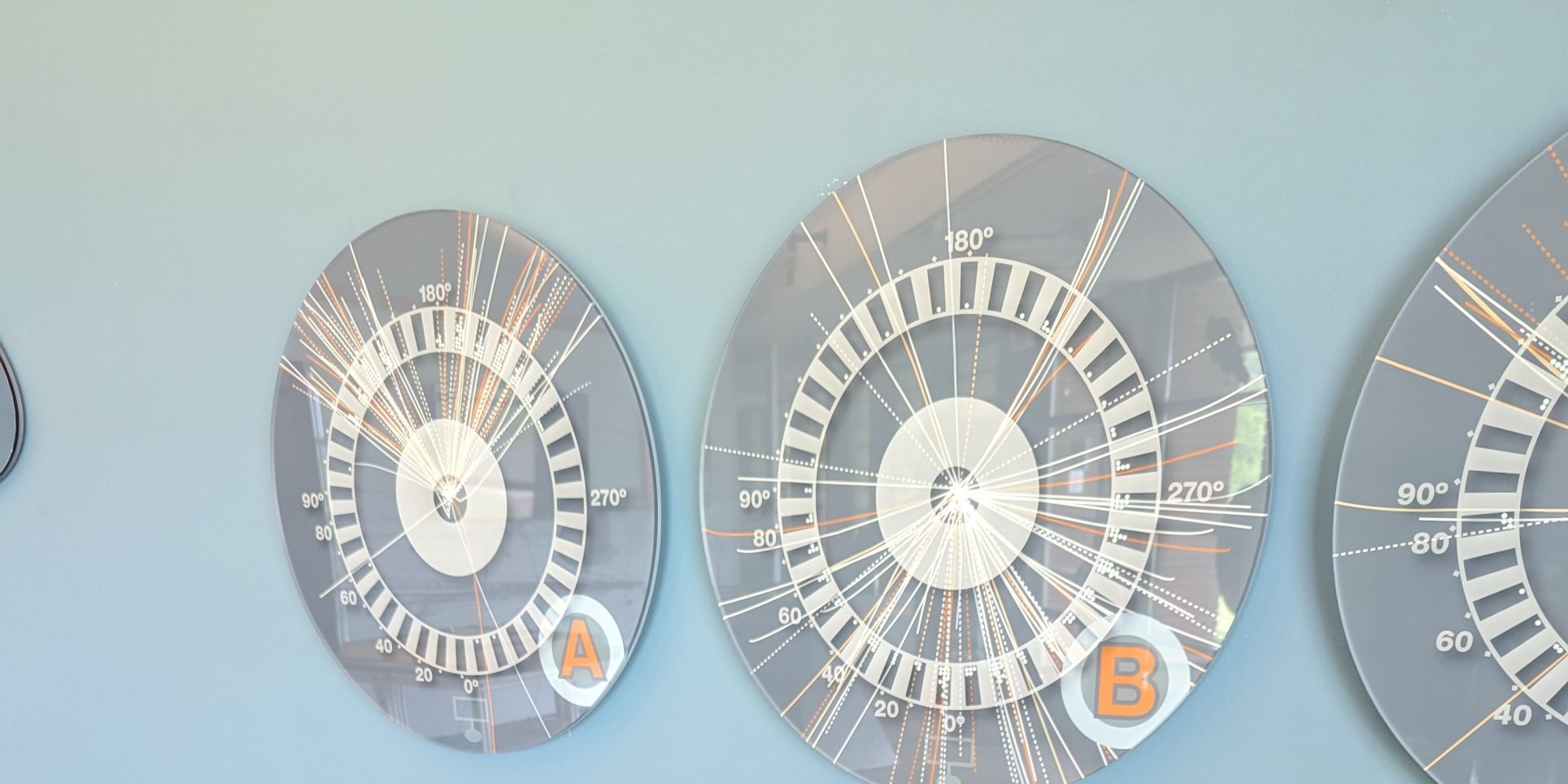This room includes scattering – particles vs. waves, particle collisions, patterns in particle tracks.
Particle collisions reveal nature’s secrets. Patterns are the clue. The exhibits in this room are about scattering and finding patterns in particle tracks.
Spotlighted Exhibits
Most collisions in our world, from billiard balls to neutrinos, can be described by one word – scattering, which means going in various directions. There is a big difference between classical and quantum scatterings. Particles that make up all visible matter are quantum objects — they sometimes behave like waves, and sometimes, like tiny spheres. When a classical object, such as a marble, hits an obstacle, it bounces off. When a wave hits a small obstacle, it diffracts around it. This causes an interference pattern to appear as the diffracted waves meet each other. This interference pattern demonstrates the wave nature of particles.
Physicists learn about particles by observing particle collisions. When particles come near enough to each other, they influence each other. These “collisions” create particle tracks, which can tell scientists about a particle’s energy, direction, speed, and electric charge. Physicists take snapshots of particle collisions and call them particle events.
Particle physics experiments produce far more data than can be reasonably recorded, stored, and analyzed. “Trigger” is a system that sorts out patterns in particle collisions and tells a computer to capture data only from interesting and relevant interactions.




